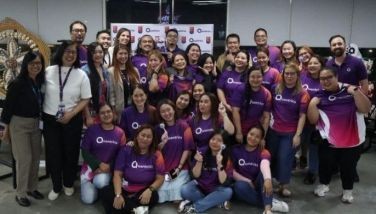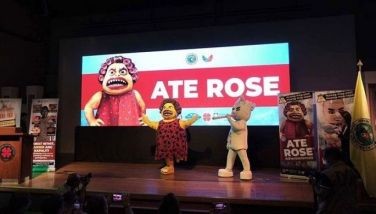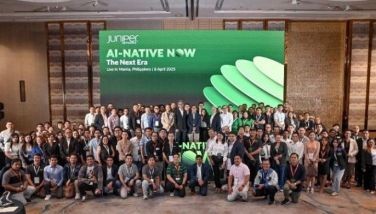Humanity in diversity

Every parent knows that one of the most difficult lessons to teach a child is how to share. It’s especially difficult with first born children, who need to develop an understanding that not only do other children exist, but that these children also have needs that deserve to be fulfilled and respected. (Of course, in their world, adults are providers without needs.)
Empathy – the ability to put oneself in another’s shoes, to recognize them as other selves that possess needs and rights just as you do – is not something that comes quickly or easily, but it’s essential for a child to become a functional adult. Without empathy, it becomes almost impossible to live with one another.
This is true not only of people, but of cultures as well.
What do we think about when we think of the word “culture?” What comes to mind are likely to be works or acts of art – songs, dances, stories that have become part of our communal identities. But culture is more than just the arts – it’s the totality of systems of behavior and thought that is transmitted from one generation to the next, that we learn as we grow up as a part of a particular community, in a particular place and time. It includes traditions, religious and ethical beliefs, social norms and taboos. It’s how we are taught to make sense of the world around us, determine what is right or wrong and how to live our lives.
It’s something that goes beyond our biological drives and instincts – every animal needs to eat and drink, but culture is what humans have developed to guide us in what we can eat, when we should eat, how we must eat. It is something learned, symbolic and shared. Culture is something that is fundamentally human and fundamentally humanizing.
But there are many ways to be human. And a failure to understand that can turn culture into a vehicle for the worst kinds of dehumanization.
According to the United Nations, three-quarters of the world’s major conflicts have a cultural dimension. You only need to look at the headlines throughout the years to realize the truth of this statement. Even now – faced with existential threats such as climate change and a worldwide pandemic – there are those who use culture as the justification for war and atrocity. States that are more interested in mobilizing an army can hijack culture and turn it into an engine of repression, all in the service of a national identity that excludes inconvenient narratives and unwanted minorities. Some of the very greatest of crimes against humanity, such as ethnic cleansing or genocide, are fueled by a perverse desire to wipe out cultures other than one’s own.
Yet culture can also be wrongfully twisted in other ways, not as a weapon but as a shield to cover long-standing inequalities and injustice. Cultural relativism – when taken to mean that an action that is justified within a culture cannot be judged as wrong by one outside it – undermines the idea of universal human rights and has been used to justify the continuation of historical practices that are objectively harmful to the disadvantaged. This includes concepts such as sexist double standards and child marriages.
Last Friday, May 21, was the World Day for Cultural Diversity for Dialogue and Development, and it makes for a good opportunity to invite us all to think about what culture is… and also what it is not.
Culture is not monolithic. Diversity is an inherent part of the human condition, from the way our bodies look, to the way we form our beliefs, to our manner of expressing them. Culture is often seen as a system that unifies human behavior, but in truth it’s merely an overlay – each of us expresses it differently, takes some parts and leaves out others. And even within ourselves we carry different cultures, simultaneously. We are not just Filipinos, but Filipinos from a particular province or city; not just members of religious organizations but of alumni associations or book clubs… We have gender identities, fandoms, social classes and generational groups… We are many things, simultaneously, and just as we cannot be reduced to just one aspect of ourselves, so it is with others. We are ourselves a microcosm of the diversity that exists in humankind. And if we cannot exist with that diversity – a diversity that enriches us, empowers us and makes us who we are – we harm no one but ourselves.
Culture is not static. This is something that those who hide behind cultural relativism refuse to understand – to value culture and heritage is not the same as demanding the impossible: that it remain unchanged. Humans change, we evolve with the times and so too do our customs and traditions. To respect culture and heritage means that we don’t erase our past, and we don’t discard traditions simply because they’re old – we see their longevity instead as a mark of distinction, as a thread that ties us to those who have gone before us.
But respecting culture also means not imposing a standardized uniformity of culture and acknowledging the rights of others to create their own cultural expressions. It means allowing old practices to give way to new, empowering understandings that lift up those who were historically disadvantaged and disenfranchised.
This is because culture is not an excuse. A rich plurality of cultures is possible without allowing practices that are violative of international standards of human rights, those agreed upon by not just one culture but representatives of many. Every culture is a valid attempt to grapple with the question of how to live our lives, but not every answer that has emerged stands the test of time. It is possible to respect the past while not impeding the undeniable progress that has been made for the betterment of many previously oppressed groups.
Culture is something that makes us distinctly human. But for culture to be truly humanizing, it must not be one that seeks to dominate difference, but one that celebrates our diversity.
- Latest
- Trending

























